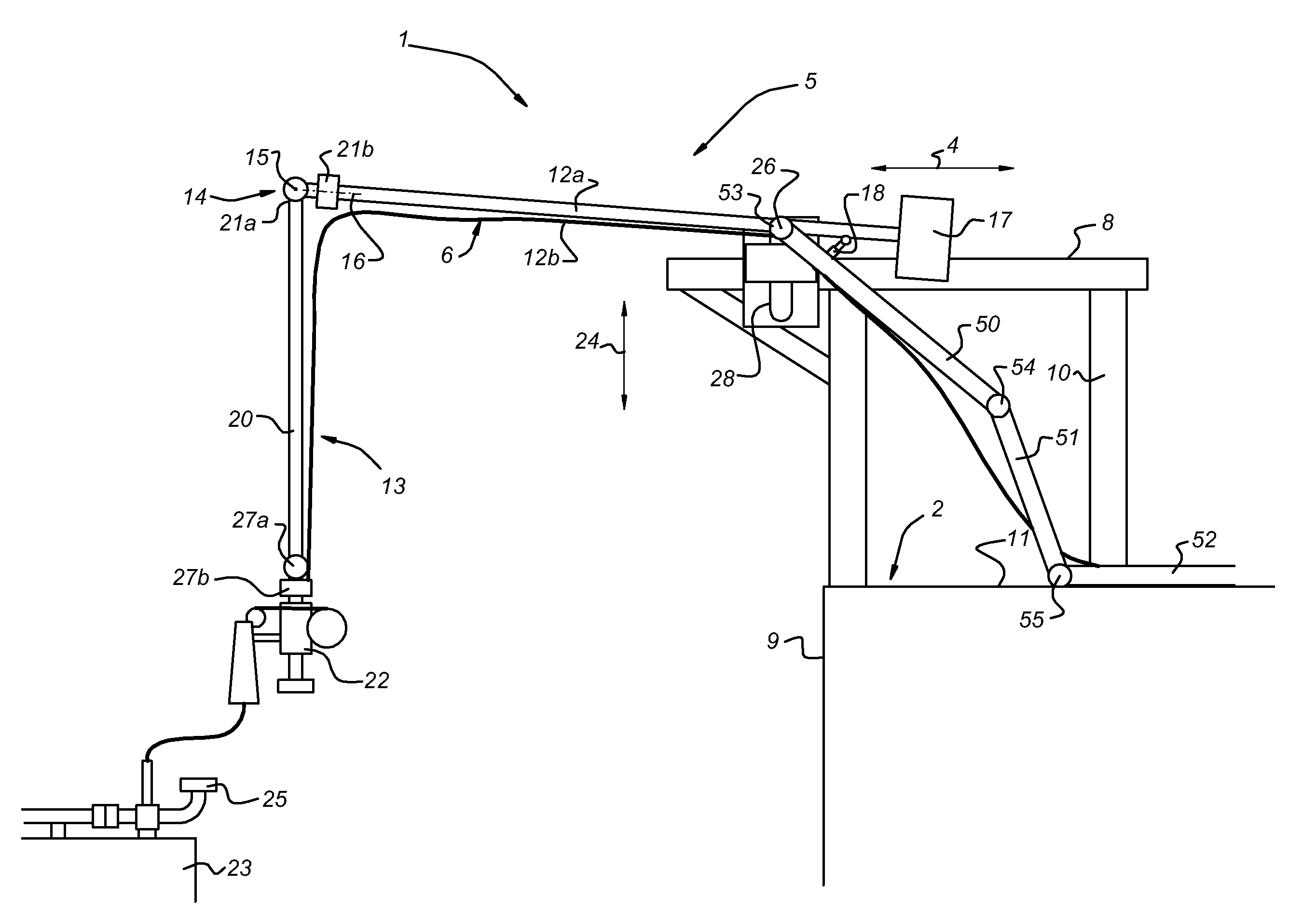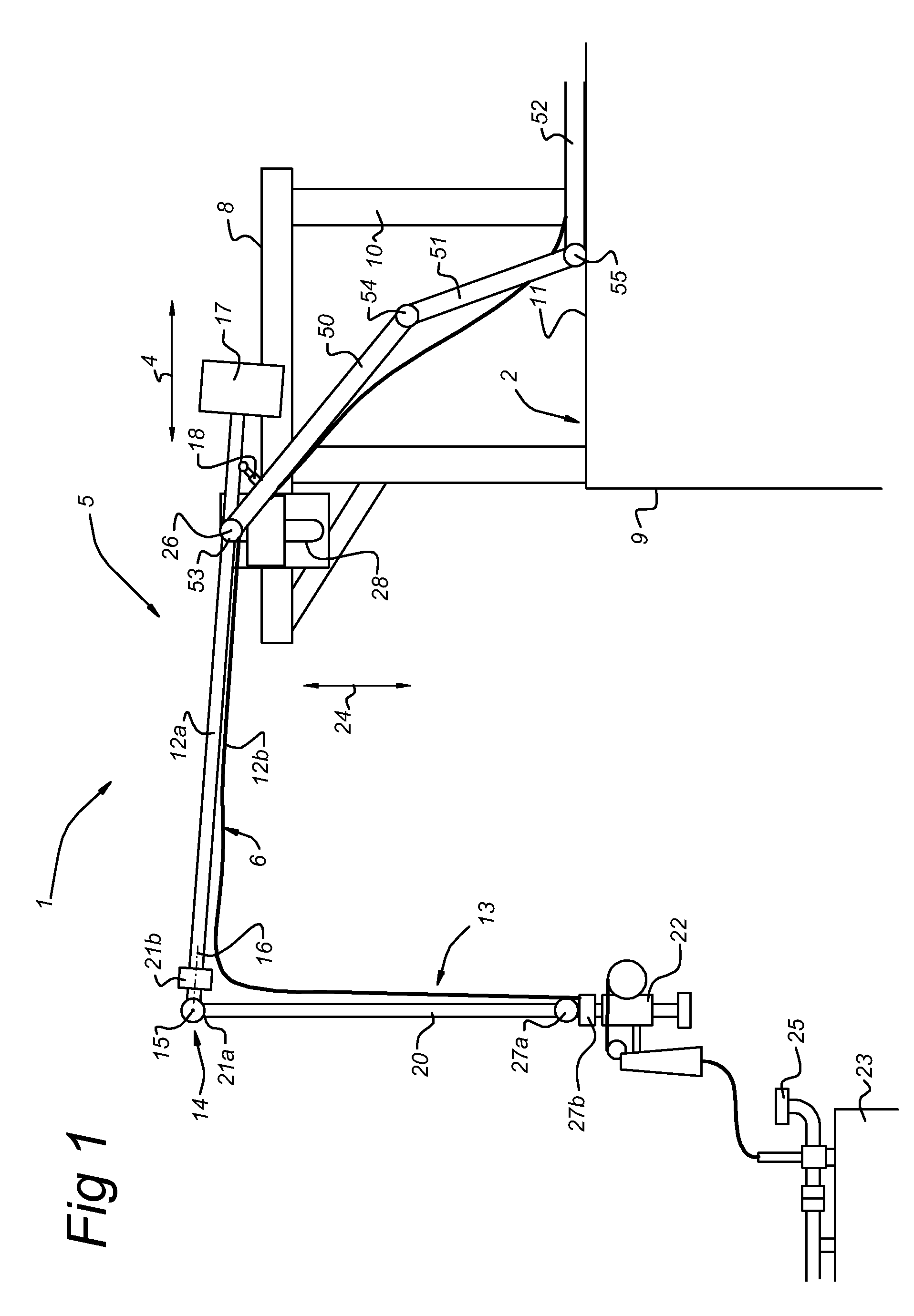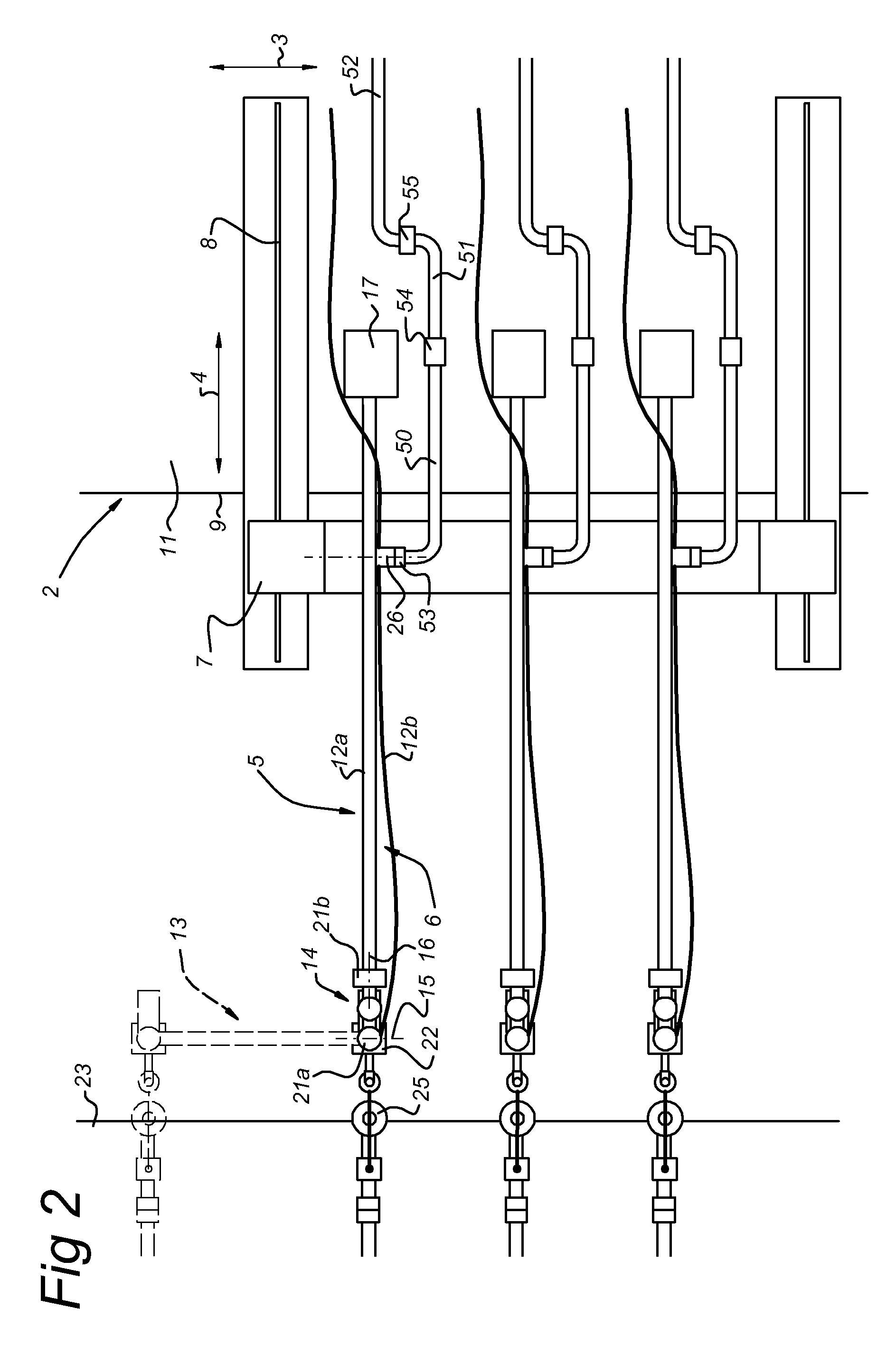Hydrocarbon transfer system with horizontal displacement
a technology of hydrocarbon transfer system and horizontal displacement, which is applied in the direction of passenger handling apparatus, liquid handling, packaging goods type, etc., can solve the problems of affecting the vessel is submerged below water level, and the access of the deck is not easy to reach, so as to achieve the effect of small volume of space, low stress, and large available deck area
- Summary
- Abstract
- Description
- Claims
- Application Information
AI Technical Summary
Benefits of technology
Problems solved by technology
Method used
Image
Examples
Embodiment Construction
[0026]FIG. 1 shows an embodiment of the hydrocarbon transfer system 1 according the invention. The hydrocarbon transfer system 1 comprises a first structure 2 with a length direction extending perpendicular to the plane of the drawing arrow (3 of FIG. 2), transverse direction 4 and height direction 24. The first structure 2 can be a sea-bed supported gravity based structure (GBS), quay, tower or a floating structure like a spread moored or weathervaning FSRU, a gas liquefaction plant or a floating power plant. The first structure 2 has a frame 5 which carries a fluid transfer duct 20,12a. At its free end the fluid transfer duct has a connecting member 22 for connecting to a cooperating connecting member 25 of a second structure 23. The second structure 23 is moored alongside the first structure 2 and can be a shuttle tanker for transporting LNG. The frame 5 has a movable frame part 7 which is displaceable in the transverse direction 4. The frame part 7 moves over a track 8 which is ...
PUM
| Property | Measurement | Unit |
|---|---|---|
| distance | aaaaa | aaaaa |
| perimeter | aaaaa | aaaaa |
| total length | aaaaa | aaaaa |
Abstract
Description
Claims
Application Information
 Login to view more
Login to view more - R&D Engineer
- R&D Manager
- IP Professional
- Industry Leading Data Capabilities
- Powerful AI technology
- Patent DNA Extraction
Browse by: Latest US Patents, China's latest patents, Technical Efficacy Thesaurus, Application Domain, Technology Topic.
© 2024 PatSnap. All rights reserved.Legal|Privacy policy|Modern Slavery Act Transparency Statement|Sitemap



